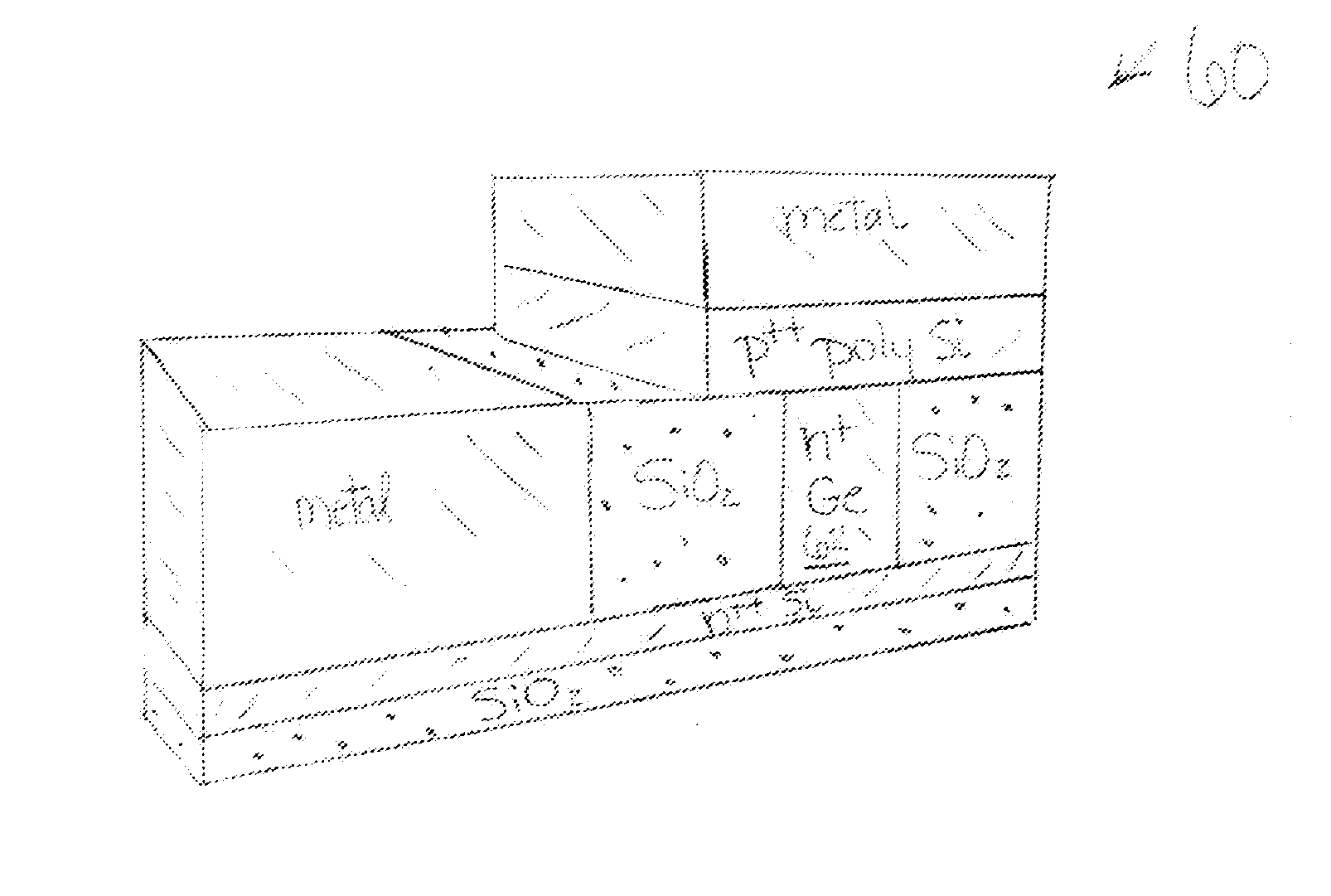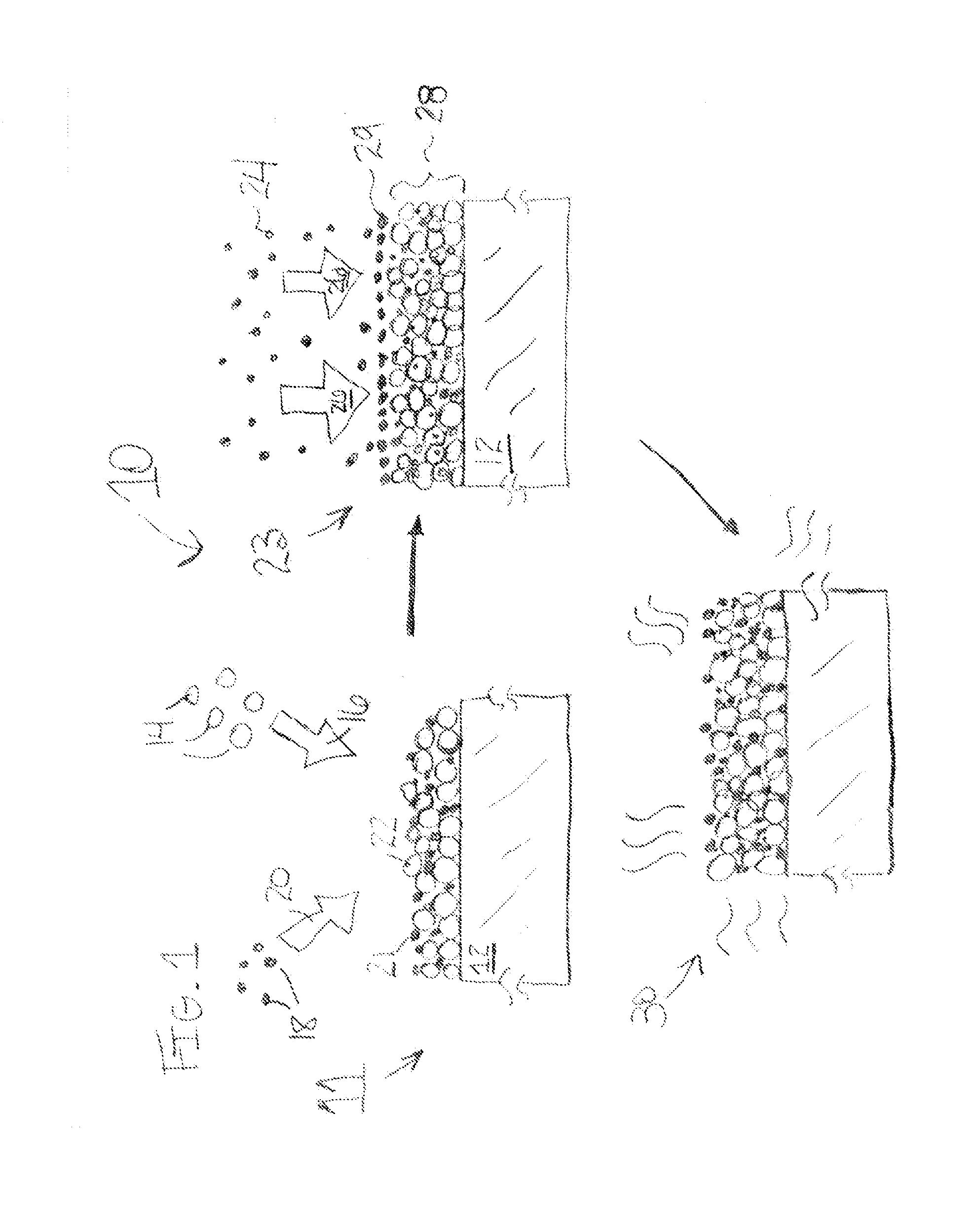High-Concentration Active Doping in Semiconductors and Semiconductor Devices Produced by Such Doping
a technology of active doping and semiconductors, applied in semiconductor lasers, laser details, electrical equipment, etc., can solve the problems of limiting the activation of dopants, the temperature required for a very high degree of dopant activation by annealing is for many applications too aggressive, and the limit of the concentration of activated dopants
- Summary
- Abstract
- Description
- Claims
- Application Information
AI Technical Summary
Benefits of technology
Problems solved by technology
Method used
Image
Examples
example 1
Ge In Situ Doping and Ex Situ Doping with Delta Dopant Layers
[0094]Ge layers were epitaxially grown on 6″ Si (100) substrates using a hot-wall UHVCVD reactor. A 30 nm-thick Ge buffer layer was first directly grown on the Si substrates at a temperature of 360° C. Then a 300 nm-thick Ge layer with in situ doping of phosphorous at a doping level of 1×1019 cm−3 was grown at an elevated temperature of 650° C. with gas flow of 3.8 sccm of GeH4 and 12 sccm PH3. For comparison, there was also grown a 300 nm-thick Ge layer that was not in situ-doped during the Ge growth.
[0095]The substrates were then exposed to PH3 gas flow of 12 sccm at 400° C. for 5 min to deposit a layer of P atoms onto the Ge surface while at the same time desorbing hydrogen. Subsequently, a 60 nm-thick intrinsic Ge layer was deposited at 400° C. Several cycles of PH3 saturation and intrinsic Ge growth were performed in the reactor to encapsulate multiple layers of P dopant atoms. For several samples, four encapsulated d...
example 2
Ge In Situ Doping and Ex Situ Doping by Ion Implantation
[0106]Ge layers were epitaxially grown on 6″ Si (100) substrates using a hot-wall UHVCVD reactor. A 30 nm-thick Ge buffer layer was first directly grown on the Si substrates at a temperature of 360° C. Then a 500 nm-thick Ge layer with in situ-doped phosphorous at a doping level of 1×1019 cm−3 was grown at an elevated temperature of 650° C. with a 3.8 sccm GeH4 gas flow and a 12 sccm PH3 gas flow.
[0107]After active layer growth, three different ion implantation processes were conducted, as given in Table I below.
TABLE 1TiltEnergyDoseEnergyDose#angle °ions(keV)(cm−2)ions(keV)(cm−2)17P1007.3 × 1015———27P1003.5 × 1015As2503.8 × 101537P1003.5 × 1015Sb3754.1 × 1015
[0108]After implantation, the samples were annealed to diffuse the implanted ions into the Ge active layer. RTA processes having a temperature of 600° C.-800° C., and durations of 30 s-180 s were conducted.
[0109]FIG. 13 is a plot of measured photoluminescence intensity as ...
example 3
Ge Laser Fabrication and Operation
[0112]A vertical-injection, electrically-pumped Ge laser was fabricated in the manner of the fabrication sequence of FIGS. 7A-7K described above, employing the process of Example 1 above for producing a Ge buffer layer of 30 nm in thickness and Ge active layer of about 300 nm, doped in situ with phosphorus doping of 1×1019 cm−3, here conducted as mesa growth in a trench window in a silicon dioxide layer as in FIG. 7D. Four encapsulated phosphorus delta layers were formed, with a silicon dioxide capping layer of 100 nm in thickness to prevent out diffusion. Thermal annealing for diffusion of phosphorus from the delta doped layers into the Ge active layer was conducted by RTA at 700° C. for 1 minute. Then the structure was then planarized, as in FIG. 7F, by CMP, to remove the delta doping and capping layers from the active Ge layer surface. The remaining thickness of the Ge active layer after CMP as measured across the substrate and found to vary betw...
PUM
 Login to View More
Login to View More Abstract
Description
Claims
Application Information
 Login to View More
Login to View More - Generate Ideas
- Intellectual Property
- Life Sciences
- Materials
- Tech Scout
- Unparalleled Data Quality
- Higher Quality Content
- 60% Fewer Hallucinations
Browse by: Latest US Patents, China's latest patents, Technical Efficacy Thesaurus, Application Domain, Technology Topic, Popular Technical Reports.
© 2025 PatSnap. All rights reserved.Legal|Privacy policy|Modern Slavery Act Transparency Statement|Sitemap|About US| Contact US: help@patsnap.com



